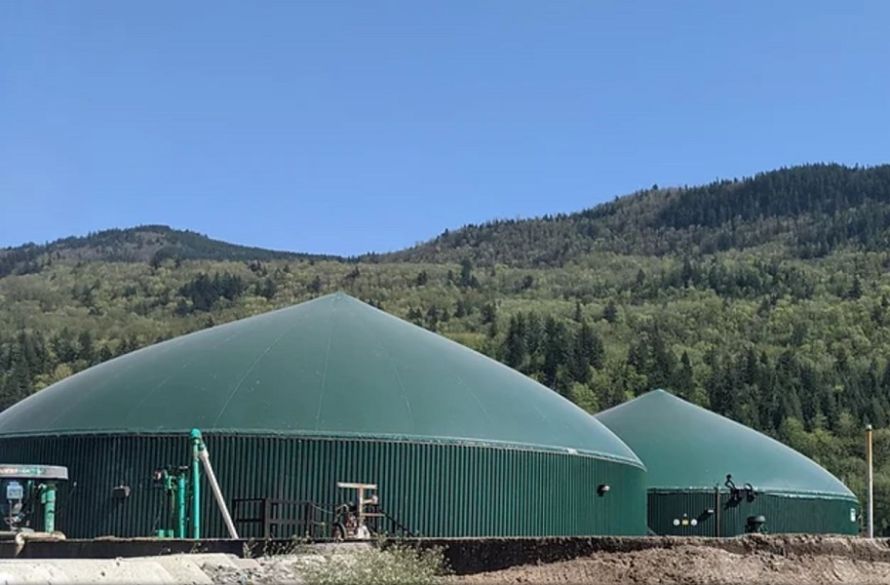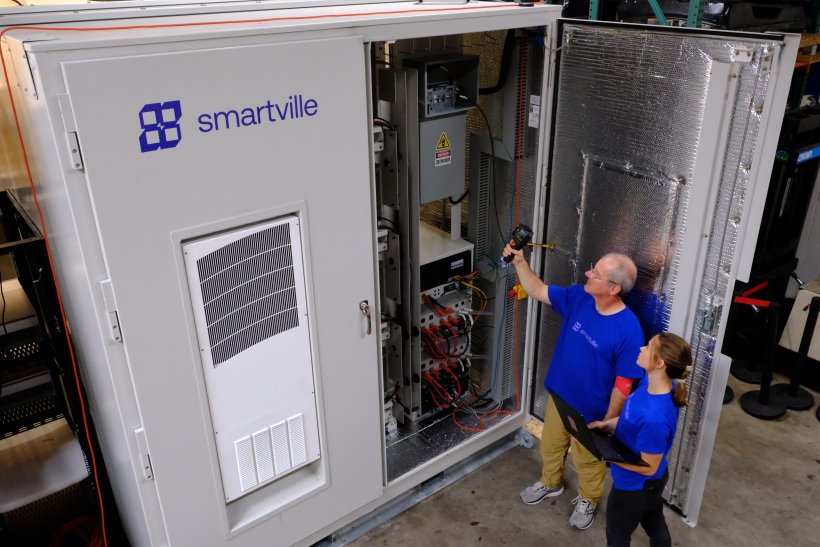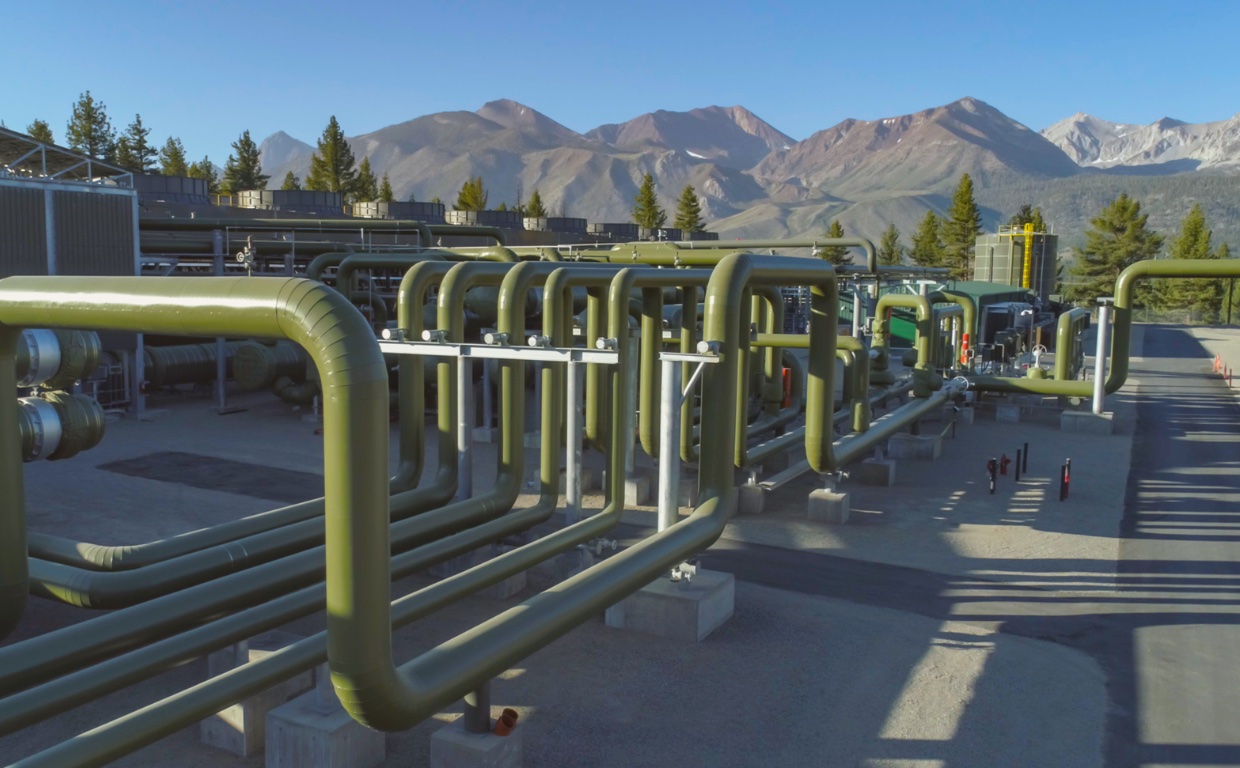Offshore wind developers eyeing the Central Atlantic for development will have a chance to participate in an auction in August.
The U.S. Interior Department on June 28 said it will have an offshore wind energy lease sale Aug. 14, offering development rights in one area offshore Virginia and another area offshore Delaware and Maryland. Combined, the two areas cover nearly 278,000 acres and could generate up to 6.3 gigawatts (GW) of energy—enough to power up to 2.2 million homes, according to the Interior Department.
“We are taking action to jumpstart America’s offshore wind energy industry and using American innovation to deliver reliable, affordable power to homes and businesses, while also addressing the climate crisis,” Secretary Deb Haaland said in a news release. “As we do, we are working collaboratively with states, Tribes and stakeholders to ensure we are making smart decisions and efficient use of our nation’s offshore resources.”
The sale will be the fifth offshore lease sale to take place since the start of the Biden-Harris administration in 2021. It will follow a record-breaking sale offshore New York and New Jersey, a sale offshore the Carolinas and the nation’s first offshore wind sales in the Pacific and Gulf of Mexico (GoM).
The Biden administration said it plans to have up to a dozen more lease sales through 2028 as it seeks to increase renewable energy’s presence on electric grids and lower emissions. The August sale will be the first offshore wind auction for this year. Another three are expected later in the year: GoM, September; Gulf of Maine, October; and offshore Oregon, October.
The U.S. is targeting the deployment of 30 GW of offshore wind energy capacity by 2030. So far, the first eight commercial-scale offshore wind energy projects approved in federal waters represent more than 10 GW of renewable energy, according to the U.S. Bureau of Ocean Energy Management.
The final sale notice for the August sale will be published July 1 in the Federal Register. Seventeen companies have qualified to participate in the sale, according to the release.
Here’s a look at other renewable energy news this week.
Bioenergy
FortisBC, EverGen Ink 20-year RNG Deal

Canadian utility FortisBC signed a 20-year offtake agreement for renewable natural gas (RNG) from the Fraser Valley Biogas facility in British Columbia, RNG developer EverGen Infrastructure said June 24.
FortisBC plans to inject the RNG into its natural gas system. The deal involves the purchase of up to 160,000 gigajoules of RNG annually, according to a news release. Fraser Valley Biogas uses anaerobic digestion and biogas upgrading to produce RNG.
“We are pleased to continue our relationship with EverGen and Fraser Valley Biogas, one of our very first RNG suppliers,” said David Bennett, director of renewable gas and low carbon fuels at FortisBC. “By continuing to increase our RNG supply, we are helping to reduce greenhouse gas emissions and supporting our vision to have around 75 percent of the gas in our system be renewable and low-carbon by 2050.”
EverGen also secured a long-term feedstock supply agreement with a waste disposal consolidator in the region, further de-risking the project. The feedstock represents greater than 50% of the off-farm waste required to achieve name plate capacity, the company said.
RELATED
RNG Producer Anaergia Appoints New CEO
Phillips 66’s Rodeo Facility Reaches Full Production Capacity Following Renewable Fuel Conversion
Energy storage
DOE Awards Nearly $1 Million for Long-duration Energy Storage Project

The first phase of the Smartville Inc.-led long-duration energy storage project Second Life Smart Systems (SMART) has secured nearly $1 million from the U.S. Department of Energy’s Office of Clean Energy Demonstrations (OCED), the federal agency said June 26.
The award amount represents a portion of the up to $10 million federal cost share of the project.
The project aims to demonstrate the viability of repurposed lithium-ion electric vehicle (EV) batteries in LDES systems across various use cases, environments and sizes, according to an OCED news release.
“During Phase 1, which is expected to last 12 [months] to 16 months, Smartville and the project team will conduct foundational activities such as formalizing the project plan, signing partnership agreements, gaining site control, conducting interconnection studies, defining the permit plan, performing environmental planning and conducting engineering and design work,” the OCED said.
The project will take place in Los Angeles County, California; Orangeburg and Denmark, South Carolina; Atlanta; and New Orleans.
Smartville plans to install small-scale systems at two Historically Black Colleges and Universities for education and training purposes; two large-scale systems for grid resilience, load balancing and peak shaving in Los Angeles County; one large-scale system to support a town renovation project and promote green technologies; and two large-scale systems to support EV charging, according to the project fact site.
Eos Energy Lands $315.5MM Investment from Cerberus
Eos Energy Enterprises, which develops zinc-based long-duration energy storage systems (LDES), has landed a capital investment of up to $315.5 million from an affiliate of Cerberus Capital Management, according to a June 24 news release.
“This investment provides the critical funding needed to execute our profitability roadmap, while also providing our customers with the confidence that Eos can produce at scale,” said Eos CEO Joe Mastrangelo. “Cerberus’ investment, combined with their deep operational and technical knowledge, enables us to expand our manufacturing capacity, streamline our supply chain and strengthen our market position.”
The funding comes as energy storage needs surge in the U.S. due to rising demand to power data centers and the rise of renewables on power grids.
Eos is aiming at LDES demand using zinc-based technology. Its Project AMAZE—American Made Zinc Energy—intends to scale annual production to 8 gigawatt-hours (GWh) of storage capacity by 2026 to meet the demand for LDES. The project received a conditional commitment for a loan guarantee of up to $398.6 million from the Department of Energy’s (DOE) Loan Programs Office.
“The strategic investment announced today, combined with Eos’ highly efficient manufacturing capacity model, supports our capital needs as we execute on Project AMAZE,” Eos CFO Nathan Kroeker said.
Cerberus’ investment structure includes a $210.5 million delayed draw term loan and a $105 million revolver. In addition, Eos will utilize a portion of the proceeds to retire its existing $100 million senior secured term loan on favorable terms. The company said it reached an agreement to extinguish this debt for $27 million, of which $20 million has been paid and the remaining $7 million will be payable over the next twelve months.
Haynes and Boone guided Eos on the investment.
RELATED
Generac Acquires Energy Storage Solutions Provider
Exxon, South Korea's SK On Sign Non-binding Deal for Lithium Supply
Geothermal
SLB, Ormat Technologies Form Geothermal Partnership

SLB and geothermal developer Ormat Technologies plan to merge their expertise to develop and deliver integrated geothermal projects with a focus on traditional and enhanced geothermal systems, the companies said June 24.
Global energy services company SLB will bring its knowledge in reservoir characterization, well completion and production technology to the partnership, while Ormat will bring its geothermal field and project development, power plant design and manufacturing, operations and engineering, procurement and construction capabilities, according to news release.
As part of the partnership, SLB will license Ormat’s enhanced geothermal systems patent.
“Geothermal energy represents a significant opportunity for the energy transition, providing clean, baseload renewable power,” said Irlan Amir, vice president of renewables and energy efficiency for SLB. “By combining our expertise with Ormat, we are pioneering the first ever geothermal-as-a-service offering in the market to help customers unlock the full potential of geothermal resources and accelerate the deployment of this sustainable energy source.”
Using injection and producer wells in hot reservoirs, geothermal energy is among the technologies being pursued to help lower emissions. Heat extracted can be used to heat or cool homes and buildings via direct use heat, or to generate electricity with higher temperature geothermal resources.
Besides being a renewable energy source, geothermal power plants provide baseload power—meaning they consistently produce electricity—regardless of weather conditions.
“As the largest owner and operator of geothermal fields and power plants in the U.S., this strategic collaboration with SLB aims to expand the opportunities for geothermal development utilizing both traditional and EGS technologies,” said Paul Thomsen, vice president of business development for Ormat Technologies. “Ormat’s world class geothermal development expertise perfectly complements SLB’s significant reservoir knowledge and well completion technologies.”
SLB said it has been involved with about 80% of the world’s geothermal power projects.
RELATED
Fervo Executes Two Geothermal Agreements with Southern California Edison
Longevity in Mind, Utah FORGE and Partners De-risk Tech to Advance Geothermal
Hybrid
China Three Gorges Renewables Plans $11B New Energy Project
(Reuters) China Three Gorges Renewables Group said on June 28 its onshore unit will invest in a 79.8 billion yuan (US$10.99 billion) integrated new energy project in north China’s inner Mongolia region.
One of the state-approved large-scale new energy bases in the city of Ordos will include 8 GW of solar power installations, 4 GW of wind power, 4 GW of coal-fired power as well as 5-GWh of energy storage, the Shanghai-listed firm said in a stock filing.
Construction of the project will commence in September this year and electricity will be on grid by June 2027, the company said.
The project will dispatch electricity to the Beijing-Tianjin-Hebei cluster in northern China via an ultra-high voltage power transmission line, the firm said.
China Three Gorges Renewables' onshore unit holds 56% of the investment, while local government-backed Inner Mongolia Energy Group Co Ltd. holds the remaining 44%.
Hydrogen
Brazil's Eletrobras, Suzano Team up to Make Hydrogen, Synthetic Fuels
Utility company Eletrobras and Suzano agreed to develop sustainable solutions, the Brazilian firms told Reuters on June 27, including renewable hydrogen production and potentially building a synthetic fuels plant.
Power giant Eletrobras and pulpmaker Suzano had been in talks for the partnership since last year and will now study the feasibility of making “green” fuel based on biogenic CO2, a by-product of Suzano’s pulp output, they said.
Generated from the burning of biomass and black liquor, biogenic CO2 can be captured and mixed with renewable hydrogen to produce synthetic fuels, according to the companies, which see “demand potential and scalability” for it.
One of the main solutions targeted by the firms is e-methanol, which is seen as a promising alternative for the decarbonization of the transport and logistics industries.
“E-methanol is one of the most likely candidates to replace fossil fuels in the maritime industry,” Suzano Energy Head Paulo Squariz said. “Its production would significantly contribute to the energy transition.”
Eletrobras, Latin America’s largest utility, has been increasing its focus on green solutions, seeking to take advantage of its huge hydroelectric assets to supply future green hydrogen projects with clean power at competitive prices.
The company earlier this month had already partnered with infrastructure firm Prumo to produce green hydrogen in a Rio de Janeiro port, after a similar deal with Green Energy Park (GEP) in northeastern Brazil.
“This agreement establishes the basis for the development of a strategic cooperation,” Eletrobras’ Head of Energy Solutions Italo Freitas said about the deal with Suzano, the world's largest pulp producer.
“It aims to meet the growing demand for low-carbonhydrogen and its derivatives in the national and international market.”
Suzano is also a large generator of renewable energy from biomass, currently having an installed capacity of 1.3 GW.
RELATED
Exxon Taps Air Liquide for Largest Low-carbon Hydrogen, Ammonia Project
Solar
Recurrent, Bank of America Close Tax Credit Transfer Deal for Solar Project
Canadian Solar subsidiary Recurrent Energy signed a $103 million tax credit transfer agreement with Bank of America for a 160-megawatt (MW) solar project near Oklahoma City, the solar company said June 27.
Transferability, a provision in the Inflation Reduction Act, allows companies generating certain clean energy tax credits to sell their tax credits for cash to third-parties. The Internal Revenue Service (IRS) released final guidance for the transfer of clean energy tax credits in April, providing clarity on what is becoming a new source of capital for renewable energy companies.
This tax equity agreement is Recurrent’s first production tax credit transaction and first tax credit transfer transaction. The transfer of tax credits to Bank of America enables Recurrent to access funding more quickly and efficiently, the company said.
“This transaction demonstrates our ability to support clients by helping build a new market for transferable tax credits,” Karen Fang, global head of sustainable finance at Bank of America, said in a news release. “As part of our $1.5 trillion commitment to deploying and mobilizing sustainable finance capital by 2030, we are focused on accelerating and scaling renewable energy projects like North Folk Solar.”
All energy produced at the solar farm, which marked the start of operations this week, will be purchased by the Oklahoma Municipal Power Authority as part of a 15-year agreement.
Norwegian Solar Firm NorSun to Invest $620MM in US Factory
(Reuters) Norwegian solar energy company NorSun will invest $620 million in Tulsa, Oklahoma, for its first U.S. factory, the state’s department of commerce said June 25.
The facility will produce silicon ingots and wafers needed to make solar cells—the building blocks of solar panels.
President Joe Biden's administration has sought to incentivize a homegrown clean energy manufacturing sector that can compete with China.
NorSun will begin construction in late 2024 after it receives all regulatory approvals, and production is anticipated to come online in 2026, according to the statement.
The facility will create 320 direct jobs.
“I’m proud to welcome NorSun to Oklahoma, and I’m thrilled that Oklahomans will benefit from hundreds of new jobs in the Tulsa area and a $620 million capital investment,” Oklahoma Governor Kevin Stitt said in a statement. “Our pro-growth policies, workforce development efforts and ‘more of everything’ energy approach makes us an incredible state to invest in, and I’m glad NorSun can be a part of it.”
NorSun’s ingots and wafers will help meet growing demand from solar cell and panel manufacturers, who must meet stringent domestic content requirements for their products to qualify for a new tax credit included in Biden's landmark climate change law, the Inflation Reduction Act.
RELATED
Altus Power Acquires 8.5-MW Solar Array
Wind
Enbridge, Six Nations Partner to Advance Canadian Wind Project
Enbridge Inc. and consortium Six Nations Energy Development announced plans to advance a new wind energy project southeast of Canada’s Weyburn, Saskatchewan, according to a June 24 press release.
The Seven Stars Energy project is expected to produce 200 MW of emissions-free power, enough to supply energy to 100,000 Saskatchewan homes annually, the release said.
The project will be developed, constructed and operated by a subsidiary of Enbridge, with operations targeted for 2027.
Enbridge said it is working to secure a long-term power purchase agreement with utility company SaskPower to support final investment decision, anticipated for 2025.
The partnership will also receive loan guarantees of up to CA$100 million (US$73.12 million) from the Saskatchewan Indigenous Investment Finance Corp. (SIIFC).
Six Nations partners will have the opportunity to acquire equity ownership of at least 30% in the project, the release said.
Participating communities in Six Nations are Cowessess First Nation, George Gordon First Nation, Kahkewistahaw First Nation, Métis Nation-Saskatchewan, Pasqua First Nation and White Bear First Nations.
“This is a game-changer for the Indigenous Nations, Métis and First Nations,” said Chief Matthew Peigan of Pasqua First Nation. “This project will produce emissions-free electricity for Saskatchewan and provide a stable source of revenue that will benefit our people for many years to come. We are pleased Enbridge sees that meaningful Indigenous ownership is the way to build energy infrastructure in this country, and we look forward to developing this project together.”
Hart Energy Staff and Reuters contributed to this report.
Recommended Reading
CEO: TotalEnergies to Expand US LNG Investment Over Next Decade
2025-02-06 - TotalEnergies' investments could include expansion projects at its Cameron LNG and Rio Grande LNG facilities on the Gulf of Mexico, CEO Patrick Pouyanne said.
Hirs: The High Cost of Overreaching Regulation, Secrecy
2024-12-12 - Energy regulators have withheld critical information that’s resulted in damage to markets and competition.
New US Solar Tariffs on Southeast Asia to Raise Prices, Cut Profit Margins
2024-12-02 - A new round of U.S. solar panel import tariffs on Southeast Asian producers is expected to raise consumer prices and cut into producer profit margins.
Dell: Folly of the Forecast—Why DOE’s LNG Study Will Invariably Be Wrong
2025-01-07 - Kimmeridge’s Ben Dell says the Department of Energy’s premise that increased LNG exports will raise domestic natural gas prices ignores a market full of surprises.
TotalEnergies, FERC Reach Agreement in Long-Running Case
2025-01-10 - TotalEnergies will pay $5 million to settle a case where neither the company nor the government says they were wrong.
Comments
Add new comment
This conversation is moderated according to Hart Energy community rules. Please read the rules before joining the discussion. If you’re experiencing any technical problems, please contact our customer care team.




